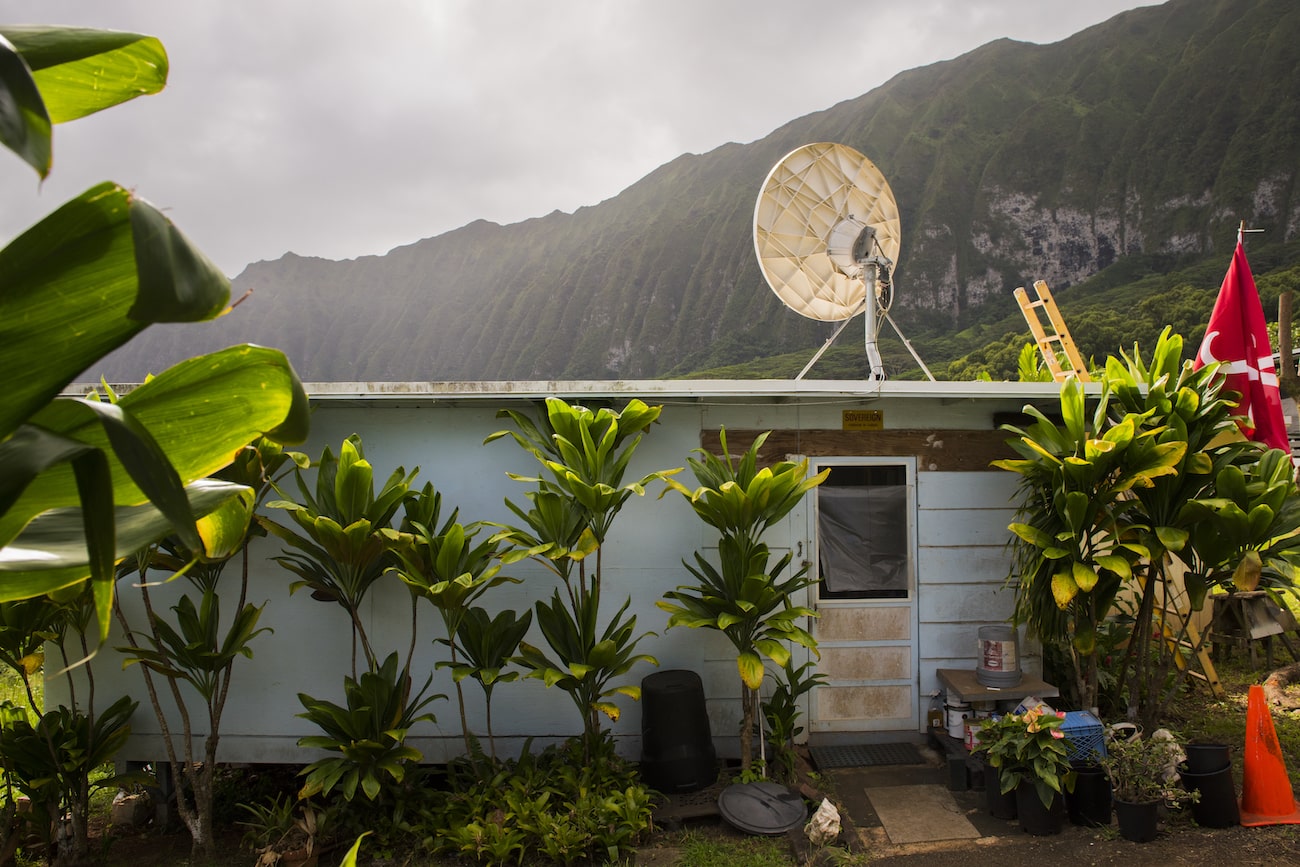
Connecting to Sovereignty with the Waimanalo Community Network
An independent nation in Hawai‘i builds the Internet from the ground up
It’s rare a story about the Internet goes all the way back to the 1800s. But in the case of The Independent & Sovereign Nation State of Hawai‘i, it does.
In 1893, the United States helped overthrow the Hawaiian Kingdom, resulting in the annexation of the islands in 1898. One hundred years later, the U.S. issued an apology, conceding that the native Hawaiian people never relinquished control to the country. It added new arsenal to a sovereignty battle that has been raging for over a century.
“There’s more to it than saying I’m sorry for making life for you Hawaiians miserable,” said the Head of State of the Nation of Hawai‘i, Bumpy Kanahele. “The lawyer said that because America apologized for what they did, that the Hawaiian people can now proclaim the restoration of their independence.”
Since that 1993 apology, a group of native people of Hawai‘i have formed their own sovereign nation, tiny though it may be—on 45 acres of land on the small island of Oahu, in the village of Pu’uhonua o Waimanalo. But in today’s globally tied world, a nation without a powerful Internet connection has little chance of success. The village had trouble getting resources from the State of Hawaii or the United States. This is just one of the areas where the Internet Society was able to help, by supporting the community to set up their own Internet: a community network.
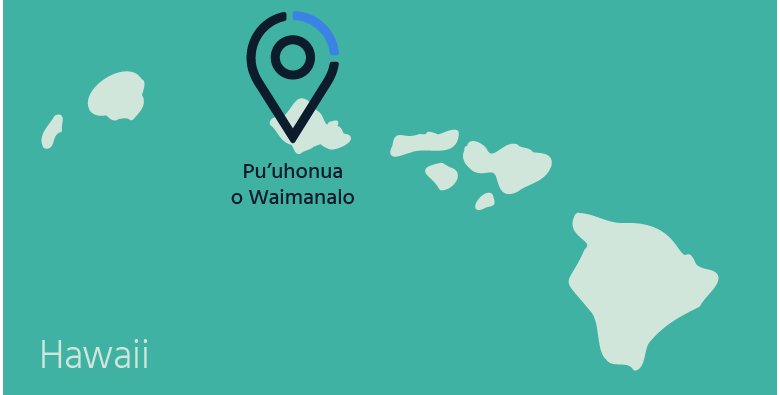
These networks are a way to tap into the Internet in areas where connection and access is hard to come by. They are built and managed by the communities who use them. With the proper training and equipment, the people of Waimanalo are now connected to the Internet and running that connection themselves.
Mainly a farming community, only about 20 families live in Waimanalo. Before the community network installation, the Internet connection in the village ran very slowly at great expense, with students and teachers having to go to local businesses for hotspots in order to get service. Only one house in the village had any semblance of reliable access, and only a very few people could connect at a time without the system going out. The most convenient hot spots were very expensive. Typical Internet companies base their infrastructure projects on population and possibility for profit. Waimanalo has neither, and they were suffering.
“It was worse than the speed, it was realizing that our kids were lacking the connectivity to all of these opportunities online with a high-speed connection,” Kanahele said. “My grandchildren had to go to the next zip code to get high-speed connection. It is the struggle of what the Nation of Hawai‘i is going through that stopped us from getting the resources we should have gotten to begin with.”
The nation has understood the importance of the Internet since the early days. In 1995 they launched their website – now updated to nationofhawaii.org – to share their history and news with the world. It included historical documents to help people everywhere learn more about a part of history that wasn’t told in every school textbook. But their access and connection to the Internet was so slow and unreliable that the site has remained fairly unchanged in structure and style. Their progress had stagnated.
Bumpy Kanahele, Head of State, Nation of Hawai‘i
and John Garcia, a community member instrumental in deploying their community network
Collaborating on a community network
Kanahele says having a go-between who knows governmental systems was invaluable to the construction of their new community network. While the village could take care of its own housing, healthcare, schooling and economy, connecting to the Internet requires technical skills and political finesse—things that the Internet Society was able to provide, and, more importantly, support the local population to do themselves.
In Hawai‘i, it’s not like everywhere else where you have these lands and tribes run them. We’ve been completely assimilated, except for this village. The combination of the state of Hawaii, the Nation of Hawai‘i, and the Internet Society working together to get something we’ve never had before. It took all of us coming together to get it to work.”
Now that the state is working with the Nation, they’ve been able to go much farther in setting up the infrastructure and getting the materials they needed. By setting their own groundwork, using their own tools, and powering their own connectivity, the community has been able to flourish in the global economy and culture. It was a big change for the villagers, but a welcome one.
“It is like night and day, once we knew that we were going to have fiber optic coming here, and learning how to do it,” Kanahele said. “Having high speed connections is one thing, but responsibility is another.”
“I never even had my own email before I started working with my uncle [Kanahele], which is kind of trippy because most people use the internet daily, and it’s no big deal, but these things were totally new to me,” Makawa’awa’a said.
Not only can the residents of Pu’uhonua o Waimanalo now manage their own network, they helped build it, which means they understand the connection from the ground up. But setting that network up wasn’t an easy task. The community was lacking in resources and faced environmental challenges.
“The [Internet Society] classes were very helpful to me,” said Makawa’awa’a. “We learned about the different aspects of building a network, and what the acronyms were. You can take someone who didn’t know anything about the Internet, and in eight weeks, you have someone who can at least sit down and understand the discussion and add their own thinking to it.”
To help the Waimanalo people set up the network, Baicells, a leading manufacturer of LTE and 5G technologies, sent trainers and experts. The organization put on workshops that focused on LTE networks and the wireless equipment needed for those networks within the community. They taught residents how to assemble ethernet cables and keep up the maintenance for the system after they left.
The company provided technical training and products worth approximately $20,000 as part of their mission to connect the unconnected and strengthen the reach of global Internet.
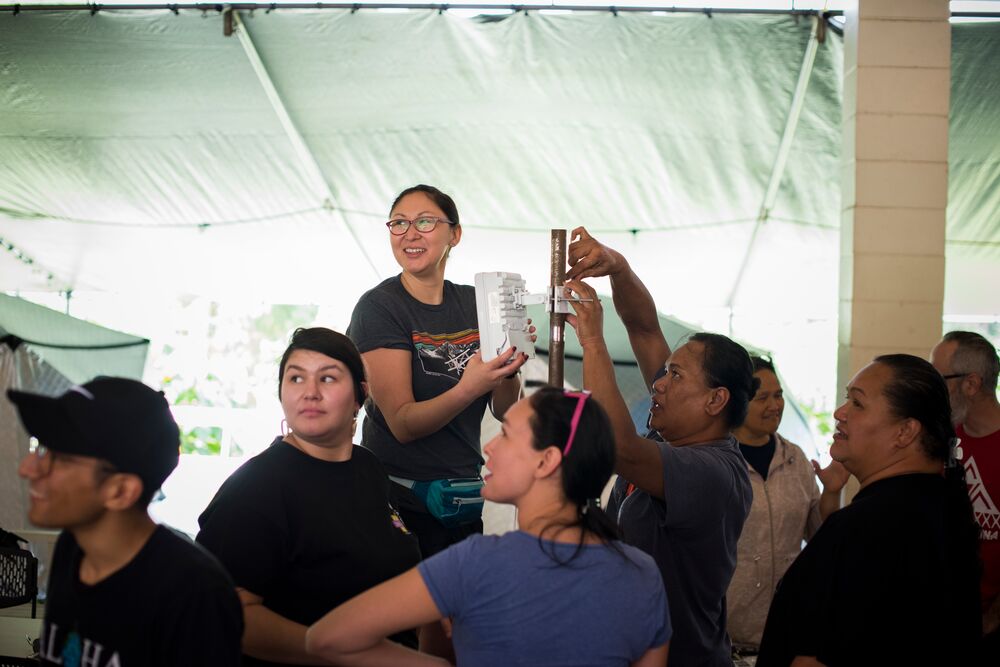
Community members of Pu’uhonua O Waimanalo work together with the Internet Society to learn how to use and install the Internet during the Internet Society/ Pu’uhonua O Waimanalo training session on November 14th, 2019.
Colin Kippen, State of Hawaii; Burt Lum, Hawaii Broadband Initiative lead and Hawaii Chapter lead; Bumpy Kanahele, Head of State, Nation of Hawai‘i.
Building the network
Pu’uhonua o Waimānalo’s topography makes typical Internet connection difficult, which is one of the reasons they turned to a resident-built-and-operated community network to meet their needs.
The first technical mountain to scale was access to backhaul. While Hawaiian Telecom had one fiber termination point at the community’s outskirts, the community needed a second fiber connection to provide reliable access to everyone within the village.
To get that second fiber connection to the community hall building from the first termination point, they needed to dig a trench. A local system integrator got the right material for the connection, and the people dug the trench themselves.
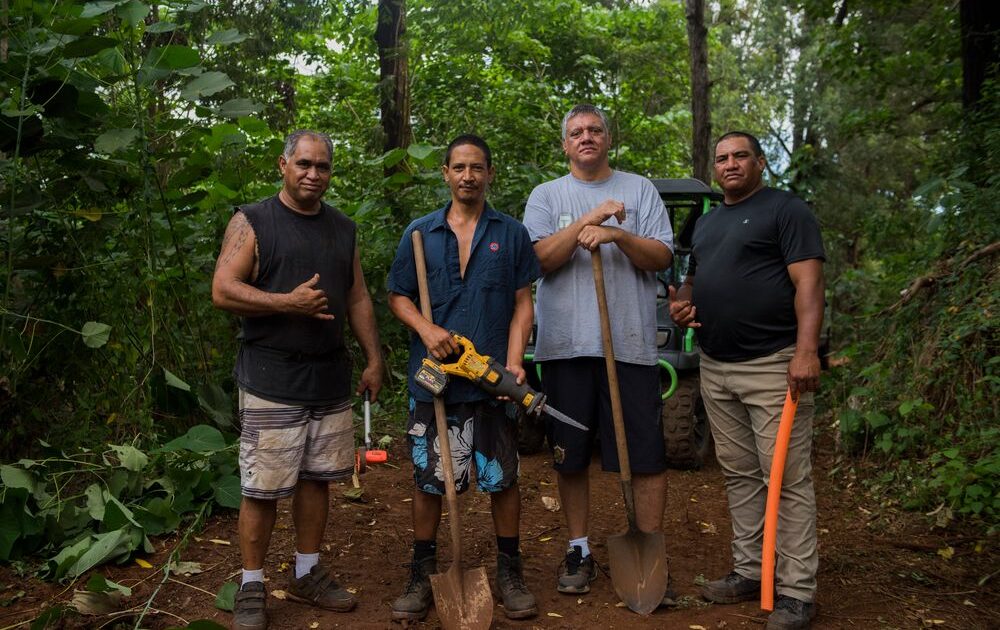
People in Waimanalo stepped up and dug a trench to get a fiber connection to the community hall.
“We’ve laid our own water lines before, we’ve done our own trenching, and trenching fiber is like trenching a waterline,” Makawa’awa’a said. “Then we had to connect all the pieces. We went through a workshop with the people who came to help, which was vital because now that we’re on our own, we have to do it ourselves, and we can, because they taught us.”
Each fiber they used had 1Gbps capacity. Combined, they provide a total speed of 2Gbps for the community.
The broadband connection is the ability to hook up to knowledge. When you get access to the world, it’s all over. Now you’ve got geniuses overnight. The community is unleashing.”
Once the community hall was online, the people needed to be able to connect to it. But the community network in the village faced another challenge: trees. Most community networks use Wi-Fi to connect the area, but the tall, wide trunks blocked those typical signals. Still, the villagers needed to connect wirelessly. They needed another way around.
Spencer Sevilla, from the University of Washington, had a solution: Long-Term Evolution, known as LTE data, and used by mobile phones to connect to cell towers, using differing wavelengths.
LTE is not a usual option for community networks because LTE spectrum bands are typically licensed out and regulated, making them artificially scarce. In Waimanalo, however, the LTE solution was chosen to operate over an unlicensed 5 GHz spectrum band, and thus free for the community to use provided they have the right equipment, which they did through the donation from Baicells.
John Garcia, a member of the community, was instrumental in helping get the system up and running, and teaching the residents how to use it. He is a key player in keeping it online after the installation.
I’m fortunate to have a background in technology and communications, and so I ensure we are connected physically, so we can connect digitally. Having the Internet allows us to connect and evolve not only what we are doing here but create digital literacy and content. The last 12 months have been an evolution to full capacity.”
Garcia worked together with the Internet Society and Baicells to teach his peers how to operate routers, how to navigate problems, and troubleshoot connection issues, including infrastructure failures and basic Internet use. The people had a lot to learn.
Community members took part in workshops focused on LTE networks and the wireless equipment to set up the community network and keep up the maintenance for sustainability
Connecting to the world
The Internet on Pu’uhonua o Waimānalo represents a connection to the global marketplace, and a chance for the people there to shine in education and entrepreneurship.
It involves teaching the community how to operate routers and basic Internet use. We must rise up to these opportunities. There are a lot of entrepreneurs here who can now connect and work from home. We moved from no connectivity, to being connected, to being able to control that connection and expand it.”
Already, the nation’s people are harvesting the power of enhanced Internet connection via the community network. Community broadband has been used to prototype, test, and give access to connected tools that allow peer-to-peer exchange within the village and abroad. For instance, an app called Exchange Ave. provides a platform for barter and trade economics. It already has 700 members, and has facilitated 200 exchanges in the past six months.
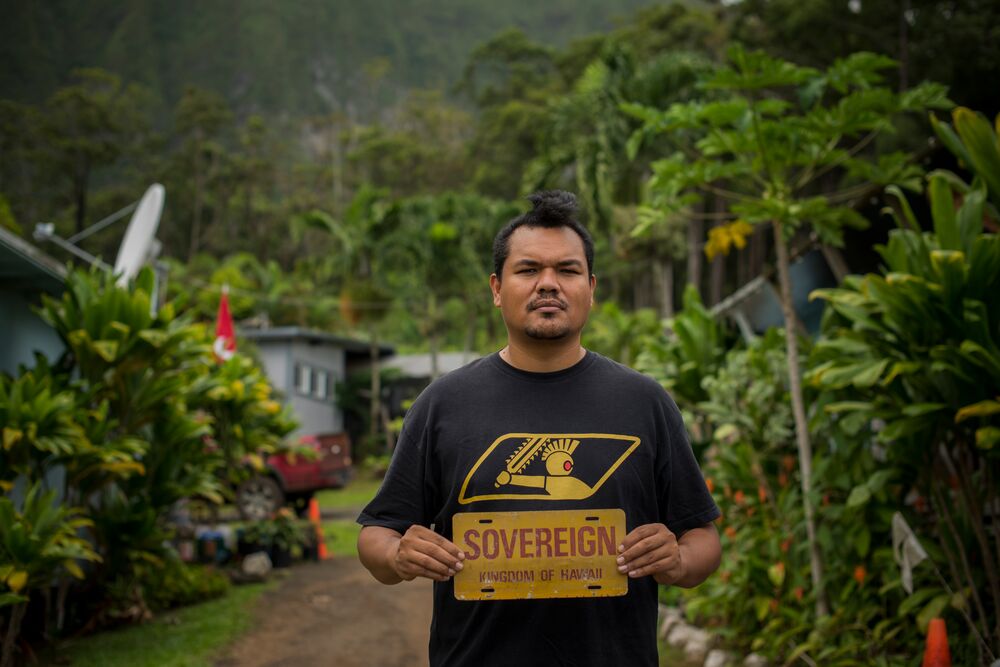
Brandon Makawa’awa’a, Deputy Head of State, Nation of Hawai‘i.
More locally, the Nation of Hawaii’s efforts in online community building and social media marketing are increasing access to health and wellness goods along with branded and curated items from community partners, spurring economic growth for the nation. The products are produced by the citizens of the nation and the profits go to them.
The L’oil 2 My Soil app allows the villagers to sell pure essential oils and hydrosol sprays made from a locally invasive overgrowth of eucalyptus leaves. There are farming apps which manage tracking, patterns, and sales. There is also a Bee Apiary app which tracks hives and Queen activity, as well.
But economic exchange is not the only benefit of faster Internet entrepreneurship. Content creation is also key, with members of the community joining social media platforms, writing, creating videos, and messaging and expressing their pride and heritage over the Internet.
Striking out as an independent country is incredibly hard with a few people and only a small area of land. The people there have created their own infrastructure. They’ve built their own housing and businesses, taken over their own schooling, and worked with state and federal agencies and companies to pipe in electricity and other necessary amenities.
“Being shut out by government . . . for funding and resources, it [became] about what are we going to do as a nation for our community,” Kanahele said. All the other stuff – housing, healthcare, you name it – we’ve done it here in the village, but the Internet Society was a turning point in getting support.”
The Internet was only their next stop in a long line of technological advances, and that Internet will make those advances possible. Which is why, in this case, the Internet interplays with human rights in a demonstrative way. Now Pu’uhonua o Waimānalo has a striking chance of realizing the potential leaders have seen for centuries.
It is the struggle of what the Nation of Hawai‘i is going through that stopped us from getting the resources we should have gotten to begin with said. As a nation, we like to have the ability to have a connection to other continents, we are thinking from a nation viewpoint.”
The village is hoping to create a library and educational materials so that they can broadcast from the Island to the world at large. With the COVID-19 pandemic, the technology came just in time.
“It was very vital that we got this connection up, because if we didn’t our kids wouldn’t be able to go to school today,” Makawa’awa’a said. “The system we have now – blockchain voting and blockchain government – won’t be possible without the Internet.”
Waimānalo is an example for other more rural areas in Hawaii, Makawa’awa’a said. They are seen as a pilot program, and since they have tried out the different technologies, they are able to help others strategize their best way forward for Internet access. They hope to pave the way for their own people to make a global difference and receive the global recognition they deserve.
“At the end of the day it is about identity, and it’s about village connectivity,” Garcia said, “how it connects to the world and how we connect to ourselves.”
Images: © 2019 Elyse Butler